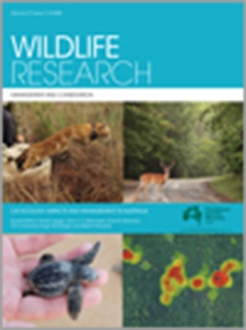Context. Over the past decade, the coastal waters off Cape Cod, Massachusetts, have emerged as the only known aggregation site for the white shark (Carcharodon carcharias) in the western North Atlantic. During periods of seasonal residency, white sharks patrol the shoreline in search of pinniped prey, bringing them in close proximity to popular beaches where people recreate.
Aim. To examine whether white sharks off Cape Cod are more likely to occupy shallow depths (and consequently more likely to overlap with recreational water users) under certain conditions.
Methods. We deployed short-term, pop-up satellite archival transmitting (PSAT) tags and acoustic transmitters on 14 subadult and adult white sharks off the coast of Cape Cod during the summer and fall of 2017. PSAT tags provided fine-scale depth and temperature data, which were combined with high-resolution location data obtained from an acoustic telemetry array, to identify the depth and temperature preferences of white sharks when resident in the area.
Key results. Sharks spent the majority (95%) of tracked time at depths of 0–31 m and at temperatures from 8.9°C to 20.7°C. During resident periods along Cape Cod, individuals spent almost half (47%) of their time at depths of less than 4.5 m, but made frequent excursions to mid-shelf depths, alternating between the surf zone and deeper offshore waters. Sharks were slightly more likely to occupy shallow depths at night during the new moon. The relationship between shark depth and lunar phase varied over the course of the day, suggesting the mechanism underlying lunar effects differs among diel periods.
Conclusions. Although the overall risk posed to humans by white sharks is low, there is a high potential for overlap between white sharks and recreational water users off Cape Cod. The risk of interaction may be slightly higher during periods when local environmental conditions favour the species’ predatory stealth by influencing prey behaviour or detectability.
Implications. This study provides the first glimpse into the fine-scale vertical habitat use of white sharks off Cape Cod, which can be used to better understand the risk to recreational water users and to inform public safety practices.






